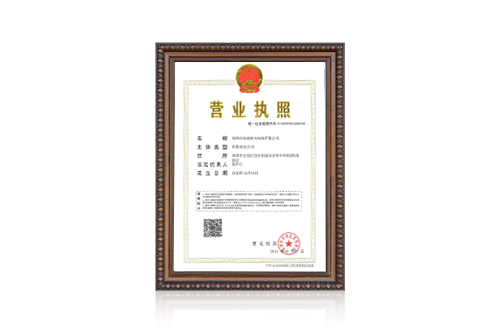What Technologies are Involved in Soft - pack Lithium - ion Batteries
Soft - pack lithium - ion batteries have gained significant popularity in
various applications due to their unique characteristics, such as lightweight,
high energy density, and shape - customizability. These batteries incorporate
several key technologies that enable their efficient operation and reliable
performance.
Packaging Technology
The packaging of soft - pack lithium - ion batteries is a crucial aspect.
They are typically encased in an aluminum - plastic composite film, also known
as aluminum - plastic film. The outer layer of this film is usually a nylon
layer. Its functions are multi - fold. Firstly, it protects the middle layer
from scratches and dirt, ensuring the battery has an appealing appearance.
Secondly, it acts as a barrier against air penetration, especially oxygen, which
helps maintain the internal environment of the battery cell. Thirdly, it ensures
that the packaging aluminum foil has good deformation capacity. In some cases,
polyethylene terephthalate (PET) may be used instead of nylon to enhance
chemical resistance, although this may reduce the depth of the punch pit of the
aluminum - plastic film. The middle layer of the aluminum - plastic film is made
of aluminum foil with a certain thickness and strength. This layer serves to
prevent water vapor penetration and protect the core of the battery from
external damage. The inner layer, mainly made of polypropylene (PP) material,
plays roles such as encapsulation, insulation, and preventing the aluminum layer
from contacting the electrolyte. Sometimes, a decorative or special protective
layer, like a matte layer outside the PET/nylon, may be added to improve the
luster of the battery appearance, but this usually results in a significant
increase in the price of the aluminum - plastic film. The encapsulation of the
aluminum - plastic film is mainly achieved through mechanical high - temperature
processes, typically at around 230 °C (446 °F). The two PP layers face each
other, and heat is applied to the nylon layer. The heat is then transferred to
the PP via the aluminum layer, and under the combined effect of a certain
temperature, pressure, and time, the two PP layers fuse together. The
encapsulation process involves several sub - processes, including PP top -
sealing, p - side seal, p - corner sealing, p - vacuum encapsulation, and PP
secondary encapsulation (degassing). Each of these processes requires precise
control of parameters such as temperature, time, pressure, and vacuum degree to
ensure a proper and reliable seal.
Electrode Technologies
The positive and negative electrodes in soft - pack lithium - ion batteries
are critical for energy storage and release. Common positive electrode materials
include lithium cobalt oxide (LiCoO₂), lithium nickel - manganese - cobalt oxide
(LiNiMnCoO₂, also known as NMC), and lithium iron phosphate (LiFePO₄). Lithium
cobalt oxide offers high energy density but has limitations in terms of cost and
safety. NMC materials provide a good balance between energy density, cost, and
safety, making them widely used in many applications. Lithium iron phosphate, on
the other hand, is known for its excellent safety and long cycle life, although
its energy density is relatively lower compared to some other materials. The
negative electrode in most soft - pack lithium - ion batteries is made of
graphite. Graphite has a layered structure that can intercalate lithium ions
during charging, storing energy. However, researchers are also exploring
alternative negative - electrode materials, such as silicon - based materials,
which have the potential to offer much higher theoretical capacity. Silicon can
store a large number of lithium ions, but it suffers from significant volume
expansion during charging and discharging, which can lead to electrode
degradation. Therefore, advanced electrode manufacturing techniques are employed
to improve the performance of these materials. This includes processes like
slurry preparation, where the active electrode materials are mixed with binders
and conductive additives to form a homogeneous slurry. The slurry is then coated
onto current collectors, followed by drying and calendaring to achieve the
desired electrode thickness and density.
Electrolyte Technologies
The electrolyte in soft - pack lithium - ion batteries serves as the medium
for ion transport between the positive and negative electrodes. Liquid
electrolytes are commonly used and typically consist of a lithium - salt
solution in an organic solvent. The lithium salt, such as lithium
hexafluorophosphate (LiPF₆), dissociates in the solvent to release lithium ions
that can move freely through the electrolyte. The choice of organic solvent is
crucial as it affects the conductivity, stability, and safety of the
electrolyte. Common solvents include ethylene carbonate (EC), propylene
carbonate (PC), and their mixtures with other linear carbonates like dimethyl
carbonate (DMC) and ethyl methyl carbonate (EMC). These solvents need to have a
good balance of properties, such as high dielectric constant to dissolve the
lithium salt effectively, low viscosity to facilitate ion mobility, and good
chemical stability to avoid reactions with the electrodes. In recent years,
there has also been growing interest in solid - state electrolytes for soft -
pack lithium - ion batteries. Solid - state electrolytes offer potential
advantages such as improved safety (reduced risk of leakage and flammability
compared to liquid electrolytes) and the possibility of higher energy density.
However, their widespread adoption is still hindered by challenges such as lower
ionic conductivity and difficulties in achieving good contact with the
electrodes. Researchers are actively working on developing new solid - state
electrolyte materials and manufacturing processes to overcome these
limitations.
Separator Technologies
The separator in soft - pack lithium - ion batteries is a thin, porous
membrane that separates the positive and negative electrodes to prevent short -
circuits while allowing the passage of lithium ions. Polymeric materials, such
as polyethylene (PE) and polypropylene (PP), are commonly used for separators.
These materials are made into porous membranes through processes like stretching
or phase - inversion. The pore size and porosity of the separator are carefully
controlled. The pores need to be small enough to prevent the physical contact of
the electrodes but large enough to allow the easy passage of lithium ions. In
addition to these traditional polymeric separators, there is also research on
developing advanced separators with enhanced properties. For example, ceramic -
coated separators have been developed to improve the thermal stability of the
battery. The ceramic coating can withstand higher temperatures and prevent the
shrinkage or melting of the separator at elevated temperatures, which is
important for ensuring the safety of the battery, especially during fast
charging or high - power operation.
Read recommendations:
Hanging neck fan
AGV car lithium battery customization
Nickel cobalt lithium manganate (NMC) battery
402030 battery Manufacturing
18650 lithium rechargeable battery











































 360° FACTORY VR TOUR
360° FACTORY VR TOUR
 Whatsapp
Whatsapp
 Tel
Tel Email
Email TOP
TOP